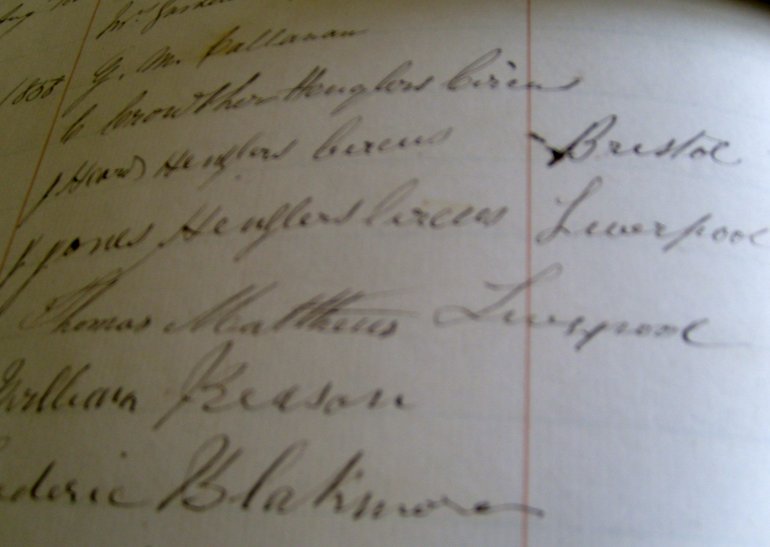
On the 7th of August 1858, several members of Hengler’s Circus Company visited the Birthplace and signed the visitors’ book. As the local newspaper did not commence publication until 1861, it is difficult to confirm whether or not performances took place in Stratford-upon-Avon, but it is recorded that the circus was in Evesham in August 1857 and visited Bristol on 26 August 1858.
The Henglers were one of the most famous equestrian families of the Victorian age. The proprietor, Charles Hengler, was born in 1821 at Cambridge. Together with his siblings he travelled with his father ‘Mons’ Henry Hengler, a famous tight-rope artiste’. Their places of residence at the time of the decennial census are testament to their lifestyle: in 1841, they were resident in Lansdown Street, Leamington Priors; in 1851, Bradford; 1861, Liverpool; 1871, The Barony, Glasgow; and in 1881, St. John, Hampstead, where Charles also died and was buried in 1887.
All members of the family developed circus skills and appeared in a variety of roles. His older brother, Edward Henry, in particular, was an amazing tight-rope performer turning somersaults on the rope whilst playing a violin. Charles, a splendid horse trainer and equestrian, was also an astute business man, and by 1847 an opportunity arose for him to buy his own circus. During the years 1847-1856 the circus was built from a small but excellent company into a gigantic and highly successful one. In winter, temporary wooden amphitheatres were erected by local builders, but in summer ‘tenting’ was the usual arena.

The first known visit of the company to Gloucestershire was during October 1851, when ‘C. Hengler’s Circus Royal and American Pavilion of Unequalled Wonders’ visited Stow-in-the-Wold, Moreton-in-Marsh, Chipping Campden, Evesham, and Tewkesbury. The winter season, opening on 3 November 1851, was spent in Cheltenham in St. Margaret’s Terrace. After several weeks the circus moved on to Exeter.
On the 8th January 1855, ‘Hengler’s New Roman Amphitheatre and Grand Cirque Variete’ opened in the New Market, Gloucester, in a spacious circular building erected by Mr. Essie. Acts included high-wire performers on tight-rope and trapeze, and a strong emphasis on equestrian acts.
At their last performance on 19th February, ‘The Battle of Alma’ was enacted with upwards of 100 ‘Real Military Auxiliaries’ taking part. This spectacular performance carried out on horseback with colourful costumes extolled the victories of Her Majesty’s imperial armies.

The years 1857-1866 saw a change in Charles Hengler’s strategy, as he gradually established a chain of permanent buildings in major cities such as Bristol and Liverpool which the company occupied in rotation, returning to the permanent Liverpool headquarters annually for the next 12 years.
Charles fulfilled a long cherished ambition when he bought the Palais Royal in Argyll Street, London where he established his 'Grand Cirque Variete’ in 1871. His shows were patronised by royalty, and a command performance was given at Windsor in 1886.
In September 1887, Charles died suddenly at Cambridge House, Hampstead, his place of retirement. His funeral was attended by many prominent circus families. His two sons Fred and Albert took charge of the company, but the early death of Fred, in 1889, left Albert in sole charge at the age of 26. In 1892 Albert purchased, from the trustees, all of his father’s establishments and circus buildings, and became the sole proprietor of the largest circus company in the United Kingdom. However, in an interview in 1894, he foresaw the golden age of circus coming to an end and, in spite of dramatic innovations such as a water spectacle, his empire crumbled. The London cirque closed in 1894, Hull was sold in 1898, followed by Liverpool in 1901. Remarkably, Hengler’s Circus in Glasgow survived until 1924 with Albert as its last proprietor. His only son had no interest in the circus and even dropped the family name. Albert died in Hove in 1937.
Norma will be sharing more discoveries from the visitor books with us as she continues with her project.
